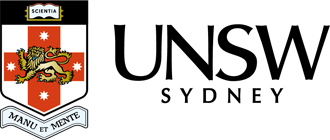Allocation of Old Computers to Staff and Students
Policy Objective
This policy provides a mechanism for disposing of equipment which is no longer of value to CSE. It sits in a broader framework regarding the responsible dispensing and use of CSE resources.Where some people have made a significant contribution to the School, such as staff or completing a postgraduate research degree, they may apply to take ownership of equipment which has no further significant value to the School.
Summary
All equipment purchased by CSE (but not on the UNSW asset register) remains the property of CSE until the School Manager or Technology Operations Manager approves a change of ownership.
This policy sets some guidelines for what computer assets the School is likely to give away and which people are likely to receive them. This policy is only intended to cover devices for storing and manipulating personal data. Eg:
- laptop/desktop computers;
- hand-held devices;
- portable harddrives.
This policy is administered by the CSE Computer Support Group.
Can the equipment be given away?
Computer Equipment assets of CSE, such as Desktops and Laptops, will cease to be regarded as CSE assets when the School Manager deems them to have depreciated or aged to an appropriate degree. The equipment may then be given away, usually to the current user of the asset. Maintenance and eventual disposal of the (former) asset becomes the responsibility of the recipient (its new owner).
A school asset will Not be given away if...
If any of the following are true, then the asset will not be given away if it:- is on the UNSW asset register;
- Assets purchased at more than $5000 are on the UNSW asset register. These are covered by UNSW asset policy and cannot be given away under this policy.
- is not a standard desktop/Laptop computer, or basic data storage device;
- Examples of items not covered by this policy include: printers, cameras, server-hardware (i.e. rack-mount servers).
- still retains current warranty;
- still retains hardware value;
- is in use by current CSE staff and does not need to be replaced with newer equipment.
A school asset May be given away if...
If all of the following are true, then the asset will be considered eligible for transfer:- Asset is over 4 years old;
- Asset is no longer covered by a warranty agreement;
- Asset no longer retains hardware value to the school;
- The recipient is a member of staff or a higher degree research student who has completed their thesis; and
- Asset was the recipient's main work computer.
Monitors
Monitors in use within CSE remain the property of the school, and as such are not eligible for asset transfer.
Cable locks
Cable/Kensington locks bought by CSE fit a master-key, and as such are not eligible for asset transfer.
You must return a CSE cable lock to CSE System Support:
- If you do not need it. Or,
- Before you stop working at CSE.
Asset Transfer Procedure
Someone who wishes to own the equipment would:- provide the School Manager or Technology Operations Manager with an explanation of why it is important that asset be transferred to the new owner rather than be retained by the School.
- remove software licensed to UNSW computers. If the computer is no longer a UNSW asset such things as CAUDIT MS Windows and MS Office, or UNSW licensed Matlab, or Mathematica must not be on the computer.
- agree to wipe sensitive information from the equipment when it passes from their custody.
The CSE transfer request should be submitted for final approval by the Technology Operations Manager.
There will be a disposal sign-off procedure where the Technology Operations Manager, or School Manager authorises the change of ownership from the School to an individual. Then the asset is marked as disposed and a record is kept of who the new owner is.
The new owner of a transferred asset should:
- take it off campus
- not use it for school work,
- not encourage other staff to use it.
Goals of this Policy
This policy is intended to cover the transfer of school assets to individuals. This is a major change from earlier policy which prohibited individuals from keeping CSE assets.
This policy would reduce the work associated with:
- disposing assets through UNSW asset disposal.
- recovering computers and wiping personal information prior to disposal.
- storing old computers that no one is using but still hold important research data.
- reallocating obsolete but potentially useful computers
- tracking old assets that are still used in the building
CSE administration wishes to clear the work areas of clutter such as old, infrequently-used equipment. Giving this equipment to people so they take it home is one way of achieving this.
This policy also seeks to balance two conflicting principles:
- That CSE assets not be disposed in a way that gives individuals an undue financial advantage.
- That assets that CSE no longer needs be given to people who can still make good use of them. Old work computers of researchers often contain data and software that is still valuable to the researcher.
CSE still tracks assets less than $5000 to ensure they are used properly. CSE can reduce this administrative burden by giving assets to those current and former researchers who can make the best use of the asset.

